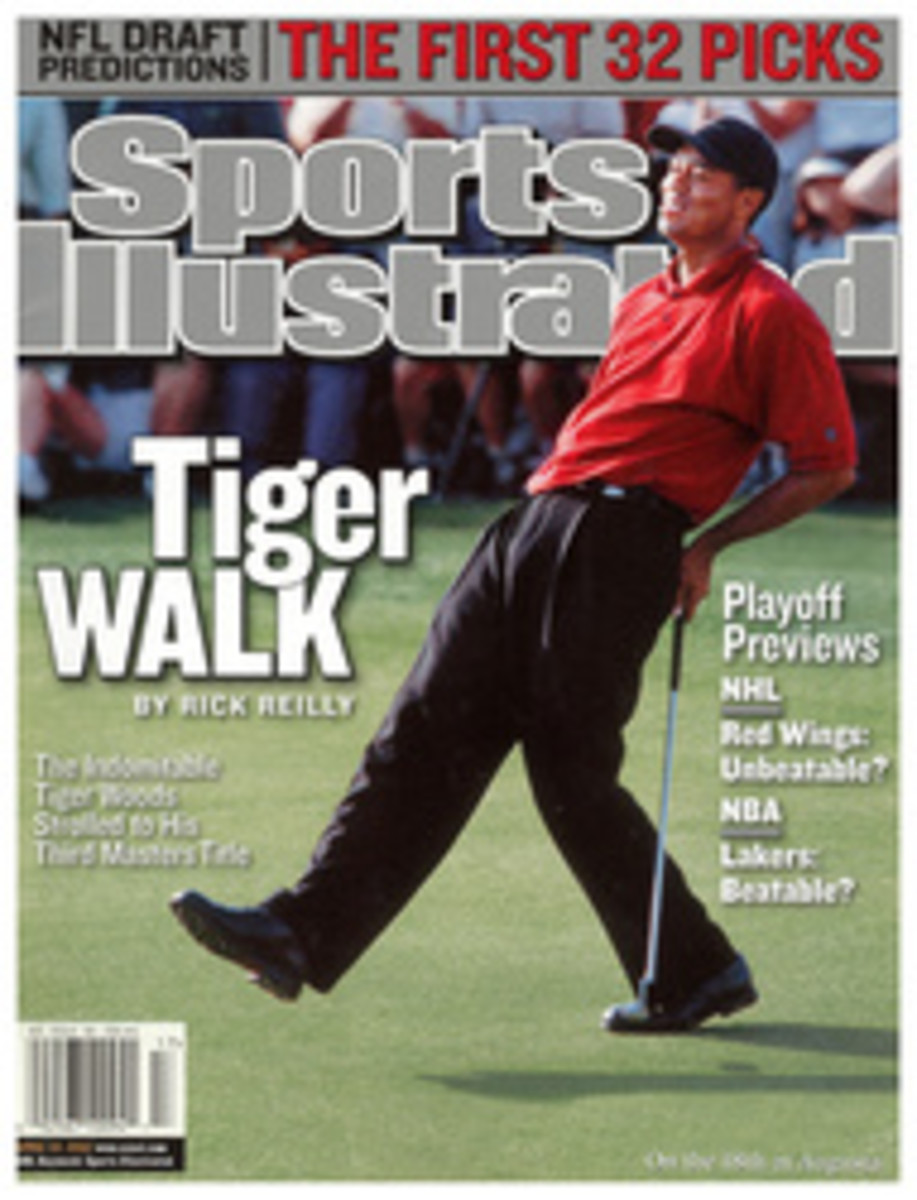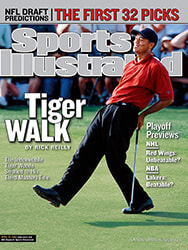
Big Play Unlike past Masters, this year's tournament was won and lost on Augusta National's tees instead of on its greens
The Masters used to be little more than a short-game
competition, but the new-look Augusta National, with 300
additional yards and some strategically placed trees, required
players to be as dexterous with the driver as with the putter.
The key to Tiger Woods's victory was his controlled driving
during the final nine, while his would-be challengers, Ernie Els
and Vijay Singh, self-destructed with wayward tee shots. Els
lost his chance at victory when he uncorked a snap hook into the
woods at 13 (above) that led to a triple-bogey 8. Singh yanked
his drive at 14 and made bogey, and then on the 15th, the
easiest hole on the course, he pulled another tee shot and was
blocked by trees. That forced him to lay up to the right side of
the fairway, giving him the most difficult angle to the
flagstick and, two splashed chips later, he had a
quadruple-bogey 9.
BACK TO THE FUTURE Some onlookers thought the National's extra
distance robbed the Masters of its usual Sunday excitement
because there was a dearth of birdies and eagles, but I think the
tournament was more thrilling than ever. How often do you see the
world's third- and seventh-ranked players (Els and Singh,
respectively) implode down the stretch with dreaded others? I
found it much more compelling to watch players mull a plethora of
options on each swing rather than simply go full bore everywhere
except around the greens.
BACK TO THE DRAWING BOARD Another thing I loved about the
revamped course was that it forced players to think. The pros had
to develop new game plans and then follow them under the
suffocating pressure of the final round. Els lost his chance at
victory because he failed to execute his plan. During the
practice rounds he had determined that he needed to favor the
right side of the 13th fairway and hit a slight draw with a
three-wood, instead of busting a hard hook around the corner as
he'd done in previous Masters. Caught up in the moment on Sunday,
Els took his old, aggressive line but couldn't pull off the shot
on the longer, more exacting hole. "It was a crazy error," he
said. "I told myself before this week, Don't go left like in
previous years. I guess I didn't listen to myself."
OUT OF THE WOODS Unlike Els, Woods was able to summon a draw when
needed, hitting one of his best shots of the final round on the
par-4 5th hole. After pulling his drive into the trees, Woods was
185 yards from the flag on a sidehill lie with his ball in
scruffy grass. He stayed balanced over the ball and rotated his
arms perfectly, hitting a low, stinging four-iron that drew
perfectly to the front fringe, 70 feet short of the flagstick.
Woods went on to make bogey, an acceptable outcome given the way
his opponents were unable to recover from their mistakes.
Eric Alpenfels is the director of the Pinehurst (N.C.) Company
Golf Institute and one of Golf Magazine's Top 100 Teachers.
THE TIP
You won't score your best unless you can work the ball both ways
off the tee, and the hardest play for amateurs is the controlled
draw, like the shot Els was attempting on the 13th hole. The key
to a draw is to have the club face slightly closed at impact. To
do that, you need to extend your arms and rotate the right arm
over the left during the follow-through (yes).
A common mistake is swinging with the left arm above the right
(no) as the clubhead moves through the impact zone. A great way
to groove the controlled draw is what I call the Right Foot Back
drill (top).
1. Using a seven-iron, take your normal address over a teed up
ball. Slide your right foot until its toes are even with the heel
of your left foot.
2. Hit several shots with a short, slow backswing. Gradually
increase the length and pace of the swing and then move up to a
five-iron and, finally, a three-wood.
3. After mastering the shot off a tee, try it off the turf, again
starting with a seven-iron and working up.
THREE COLOR PHOTOS: COURTESY OF CBS
COLOR PHOTO: PORTER BINKS
COLOR PHOTO: PORTER BINKS YES
COLOR PHOTO: PORTER BINKS NO

